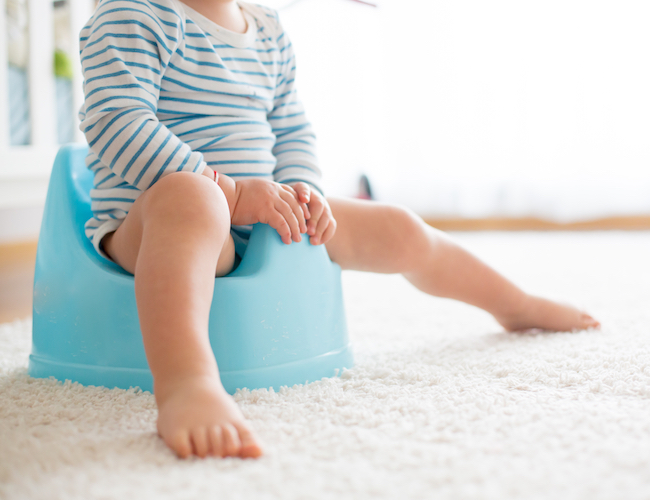End the potty training struggle
Potty training must rank as one of the most frustrating processes for parents and children alike. On the one hand, parents are driven to help their kids achieve something that is as natural as it is necessary – and yet, they’re faced with a massive wall of resistance.
Here’s a round-up of the most common potty training struggles, and how to solve them.
Peer pressure performance anxiety
You know how you feel when faced with a cubicle in a bathroom that’s clearly experienced a lot of traffic? That’s exactly how your little one feels when they're in the potty queue at play group, ordered to pee on command.
“This wouldn’t be a comfortable situation for anyone,” midwife and Well Baby Clinic nurse Elizabeth Beavon points out. “Your toddler feels that just as keenly you do, and you have to respect that.”
The solution? It’s simple, really: don’t put them in a situation you wouldn’t feel comfortable in yourself. Beavon also recommends taking stock of the reality, rather than what your child’s nursery school or the parenting guides tell you.
Your child may reach potty training maturity at anything from 18 months to three years – that’s a lengthy time. And until they're ready, you won’t have any success – so wait until they're showing signs like tugging at her wet nappy to get it away from their skin, rather than what you think ‘should’ be happening.”
Feeling the fear
You might consider the toilet one of the most mundane items in the world but for your toddler, it’s shrouded in mystery. How can they be sure they won’t be flushed away? Where does everything that goes in there disappear to, anyway? With all of that going on in their mind, it’s not surprising that they might not want to use the loo.
The answer, according to Beavon, is chatting them through the entire process. “Ask them if they want to start wearing underpants, then explain that this is the way to do it. Find out if they’d prefer a potty or a seat for the toilet. Explain where waste goes when it is flushed away – remove the mystery entirely.”
Another tip: if they opt for the seat, buy them steps or a ladder, because it’s hard to support yourself when your legs are dangling.
It’s not being naughty
A two-year-old who has an accident didn’t set out to make you angry – they either genuinely didn’t feel the signals or was too distracted to notice. The only way around this one is to keep persevering, and to habituate your little one’s bladder so that going to the toilet at certain times (like before you leave the house and after you come home) becomes second nature.
IMAGE CREDIT: shutterstock.com



